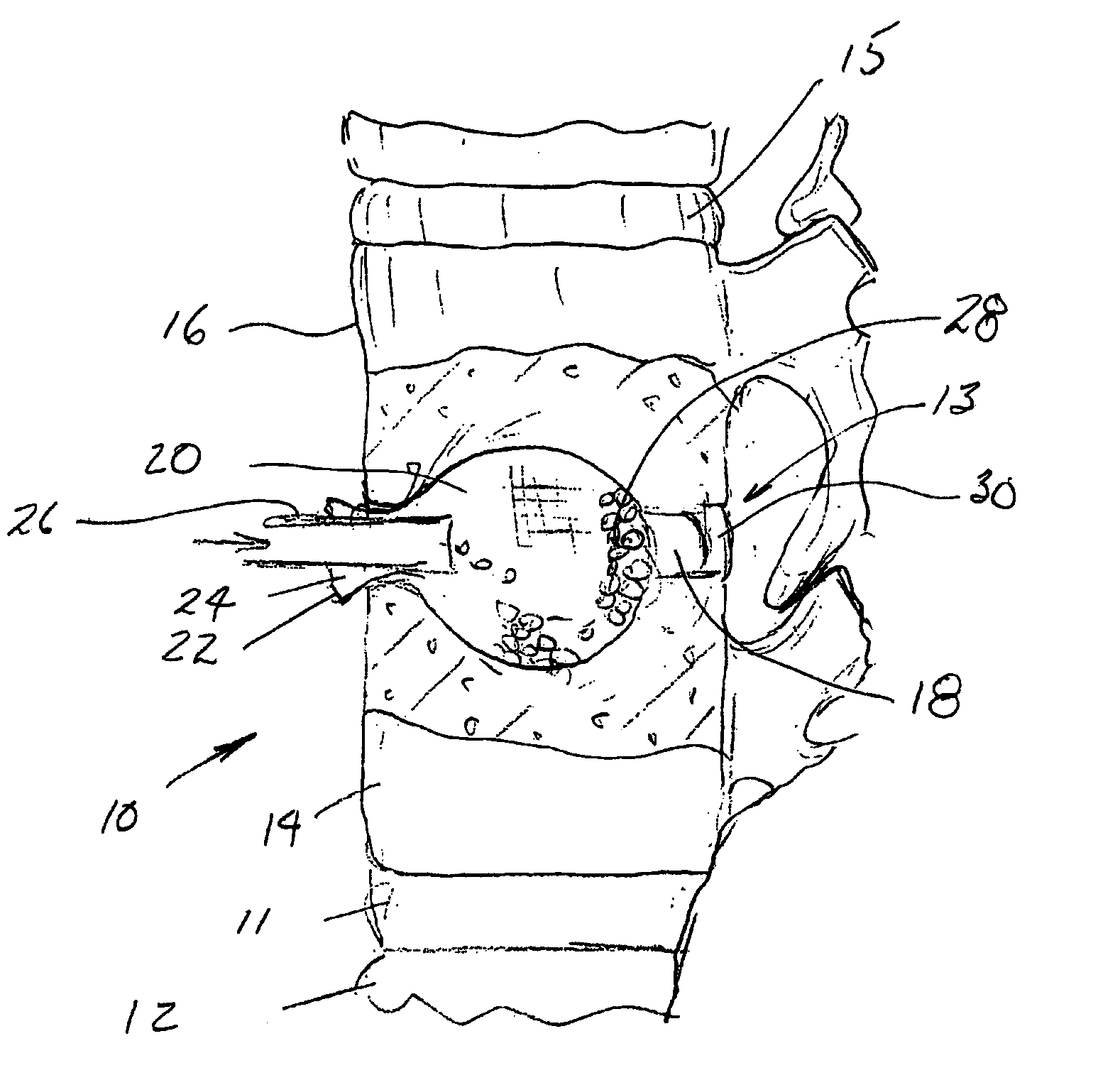Packable ceramic beads for bone repair
- Summary
- Abstract
- Description
- Claims
- Application Information
AI Technical Summary
Benefits of technology
Problems solved by technology
Method used
Image
Examples
example 1
Sintered ceramic cubes of hydroxyapatite, about 2 mm in size that had been partially rounded by treatment in a vibratory mill were supplied by Ceramed Co. The density of the cubes was greater than 98% of theoretical. These were coated by dipping into a solution of 0.75 grams of a copolymer made of equal amounts of PGA and PLA (Alkermes Corp) dissolved in 10 cc. of methylene chloride. The coated cubes were tumble-dried on a metal screen in dry air for 10 minutes and stored in a dessicator filled with argon. The coated cubes did not adhere to one another. The polymer is essentially solid but resilient. The cubes were later inserted into a polyester fabric bag—about 1 inch in diameter using a mechanical tool that packed them tightly via impact and vibrational loading. The particle-filled bag was subjected to intense mechanical loading and twisting up to one million cycles using an Enduratec biaxial testing machine that applies both compressive and torsional loading to the specimens.
example 2
Example 1 is repeated, except that the ceramic cubes are made of zirconia supplied by Coors Corp.
example 3
Example 2 is repeated, except that the solution contains 1.5 grams of the PGA-PLA copolymer in 10 cc of methylene chloride.
PUM
| Property | Measurement | Unit |
|---|---|---|
| Force | aaaaa | aaaaa |
| Size | aaaaa | aaaaa |
| Volume | aaaaa | aaaaa |
Abstract
Description
Claims
Application Information
 Login to View More
Login to View More - R&D
- Intellectual Property
- Life Sciences
- Materials
- Tech Scout
- Unparalleled Data Quality
- Higher Quality Content
- 60% Fewer Hallucinations
Browse by: Latest US Patents, China's latest patents, Technical Efficacy Thesaurus, Application Domain, Technology Topic, Popular Technical Reports.
© 2025 PatSnap. All rights reserved.Legal|Privacy policy|Modern Slavery Act Transparency Statement|Sitemap|About US| Contact US: help@patsnap.com


